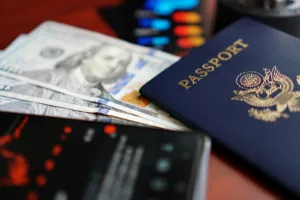
The United States Department of Justice has initiated a significant offensive against transnational criminal organizations operating large-scale cryptocurrency fraud schemes from Southeast Asia. On November 12, 2025, federal authorities announced the creation of the Scam Center Strike Force, a multi-agency task force designed to investigate, disrupt, and prosecute the criminal networks responsible for defrauding Americans of billions of dollars annually [1]. This coordinated effort involves the FBI, U.S. Secret Service, and other federal partners, and represents a major escalation in the fight against sophisticated crypto investment scams, predominantly the “pig butchering” fraud model [2].
Executive Summary for Security Leadership
For Chief Information Security Officers and security leaders, this development signals a heightened focus by U.S. authorities on a specific class of financially motivated cybercrime. The establishment of the Scam Center Strike Force underscores the scale and sophistication of these operations, which leverage forced labor, advanced technology, and complex money laundering techniques. The immediate operational impact includes the seizure of over $401 million in cryptocurrency, with an additional $80 million targeted for forfeiture, demonstrating tangible enforcement action [2]. This initiative also highlights the growing role of public-private partnerships, with blockchain intelligence firms providing critical tracing and analysis capabilities to law enforcement.
Key Points for Security Teams:
- Financial Impact: U.S. victims lost at least $10 billion to these schemes in 2024, with potential actual losses nearing $15 billion due to underreporting [2].
- Primary Threat: “Pig butchering” scams represent the dominant attack vector, involving long-term social engineering to build trust before directing victims to fraudulent investment platforms.
- Enforcement Scope: The task force targets the entire criminal infrastructure, from senior leadership and money laundering networks to the U.S.-based technical infrastructure facilitating the scams.
- Concurrent Actions: The Treasury Department simultaneously sanctioned the Democratic Karen Benevolent Army (DKBA) and associated entities for operating scam compounds using forced labor [2].
Operational Scale and Criminal Methodology
The financial scale of these criminal operations is staggering, with reported losses representing only a portion of the actual damage. According to data cited in the announcement, Americans lost at least $10 billion to Southeast Asia-based scam operations in 2024 alone, marking a 66% year-over-year increase [2]. U.S. Attorney for the District of Columbia Jeanine Pirro, who led the announcement, noted that due to significant underreporting, the true figure could be as high as $15 billion [4]. The primary method behind these losses is the “pig butchering” scam, a long-term confidence trick where criminals establish relationships with victims through various communication channels before persuading them to invest in fraudulent cryptocurrency platforms.
Law enforcement agencies have been conducting proactive measures to counter these schemes. The FBI’s notification programs have contacted more than 6,300 potential victims over approximately 15 months, preventing an estimated $275 million in further losses [2]. Similarly, the Secret Service reported responding to roughly 3,000 victim complaints in fiscal year 2025 alone. These figures illustrate both the widespread nature of the threat and the importance of early intervention and victim awareness. The criminal operations are characterized by their industrial scale, often utilizing forced labor in compound-like facilities where workers are coerced into conducting the fraud under brutal conditions [2].
Strike Force Composition and Initial Actions
The Scam Center Strike Force represents a whole-of-government approach to combating this specific threat vector. The task force combines resources from the U.S. Attorney’s Office, the DOJ’s Criminal Division, the FBI, and the U.S. Secret Service, with additional partnerships extending to the Department of Treasury, State Department, and Department of Commerce [2]. This interagency collaboration enables the pursuit of multiple pressure points simultaneously, from criminal prosecutions and asset seizures to diplomatic and economic measures. The formation of this specialized unit follows recent, historic enforcement actions against similar criminal networks, including the Prince Group case in October 2025 which involved a $15 billion civil forfeiture [2].
The strike force has already demonstrated operational effectiveness with significant initial seizures. Authorities have confiscated over $401 million in cryptocurrency linked to these fraud schemes and are pursuing the forfeiture of an additional $80 million [2]. The three primary objectives of the task force include identifying and prosecuting senior leaders and affiliates of these transnational criminal organizations, seizing and disabling U.S.-based infrastructure used to facilitate the scams, and coordinating with international partners to disrupt the entire criminal ecosystem. This multi-pronged strategy aims to move beyond individual prosecutions to systematically dismantle the operational and financial infrastructure supporting these schemes.
Concurrent Sanctions and Broader Criminal Ecosystem
Simultaneous with the strike force announcement, the Treasury Department’s Office of Foreign Assets Control (OFAC) imposed sanctions on the Democratic Karen Benevolent Army (DKBA), a Burma-based armed group, along with four of its senior leaders and associated companies [2]. These entities are accused of operating and protecting cyber scam compounds, such as the Tai Chang compound near Myawaddy, which utilize forced labor to target Americans. The designated companies include Trans Asia International Holding Group Thailand and Troth Star Company Limited, which authorities identify as fronts for China-based transnational criminal organizations.
This action builds upon recent enforcement efforts that reveal the sophistication and global reach of these criminal operations. The October 2025 sanctions against the Prince Group TCO involved 146 associated targets and a historic $15 billion civil forfeiture of approximately 127,000 bitcoin from leader Chen Zhi, highlighting the use of forced labor in Cambodian scam compounds [2]. Additionally, the Financial Crimes Enforcement Network (FinCEN) designated Cambodia-based Huione Group as a “primary money laundering concern” in October 2025, effectively cutting it off from the U.S. financial system for processing nearly $100 billion in cryptocurrency, including funds from pig butchering scams and North Korean cybercrime.
Technical Infrastructure and Countermeasures
The technological sophistication of these fraud operations continues to evolve, with reports indicating the growing use of AI-powered tools by scammers to create fake personas and scale their operations. According to Chainalysis data, AI service vendors catering to scam operations experienced a 1,900% compound annual growth rate from 2021 to 2024 [2]. This automation enables criminal groups to target victims more efficiently and with greater personalization, making the scams increasingly difficult to distinguish from legitimate communications. The use of cryptocurrency as the primary payment mechanism provides these groups with certain anonymity and cross-border transaction capabilities that complicate traditional financial tracking.
Blockchain intelligence firms play a critical role in supporting law enforcement efforts against these schemes. Companies like Chainalysis and TRM Labs provide specialized capabilities for tracing cryptocurrency flows, mapping criminal infrastructure, and delivering real-time threat alerts through platforms such as the “Beacon Network” [2]. These public-private partnerships enhance the ability of authorities to follow the money trail across blockchain networks and identify patterns indicative of large-scale fraud operations. The American Bankers Association has expressed support for the strike force, with President Rob Nichols stating that the initiative “can take the fight against international fraud and scams to a new level” [4].
Security Implications and Protective Measures
For security professionals, the announcement of the Scam Center Strike Force highlights several important considerations for organizational defense and user awareness. The continued evolution of pig butchering scams demonstrates the effectiveness of long-term social engineering tactics that exploit human psychology rather than technical vulnerabilities. Security awareness training should address these specific threat patterns, emphasizing the warning signs of investment fraud and the techniques used to establish false trust relationships. Organizations handling financial transactions or customer data should implement robust verification processes for high-value transfers, particularly those involving cryptocurrency.
The technical infrastructure supporting these scams often involves compromised U.S.-based services and infrastructure. Security teams should maintain vigilant monitoring for unauthorized use of organizational resources that could be co-opted to support these criminal operations. The significant seizures of cryptocurrency demonstrate that, while blockchain transactions offer certain anonymity features, sophisticated analysis can still uncover patterns and identify connections to criminal activity. Organizations in the financial sector should consider enhancing their collaboration with law enforcement and blockchain intelligence providers to improve early detection of fraudulent transactions and patterns associated with these schemes.
Conclusion
The establishment of the Scam Center Strike Force represents a significant escalation in the U.S. government’s response to transnational cryptocurrency fraud networks. By combining resources across multiple agencies and leveraging partnerships with private sector experts, authorities aim to systematically dismantle the criminal ecosystems responsible for billions in annual losses. The immediate actions, including substantial cryptocurrency seizures and coordinated sanctions, demonstrate a committed approach to addressing both the operational and financial dimensions of these schemes. As these criminal networks continue to evolve their tactics and incorporate emerging technologies like AI, the specialized focus and coordinated response represented by the strike force will be essential for effective countermeasures and victim protection.
References
- “Pirro announces Scam Center Strike Force to target Chinese organized crime,” Fox Business. [Online]. Available: https://www.foxbusiness.com
- “U.S. Launches New Strike Force to Combat $10 Billion Southeast Asian Scam Industry; OFAC Targets Burma-Based Cyber Scam Network,” Chainalysis Blog. [Online]. Available: https://www.chainalysis.com/blog
- “Scam Center Strike Force targets Chinese organized crime, crypto scams in Asia,” The National Desk (YouTube). [Online]. Available: https://www.youtube.com
- “Agencies form strike force to target cryptocurrency scams,” ABA Banking Journal. [Online]. Available: https://www.ababj.com
- “The Scam Center Strike Force: A Whole-of-Government Response to Global Crypto Fraud,” TRM Labs Blog. [Online]. Available: https://www.trmlabs.com/blog
- Fox Business (Facebook). [Online]. Available: https://www.facebook.com/FoxBusiness
- CBS4 Local. [Online]. Available: https://www.cbs4local.com
- “US Launches New Strike Force to Tackle Southeast Asian Crypto Scam Centers,” Sumsub Media. [Online]. Available: https://www.sumsub.com/media






